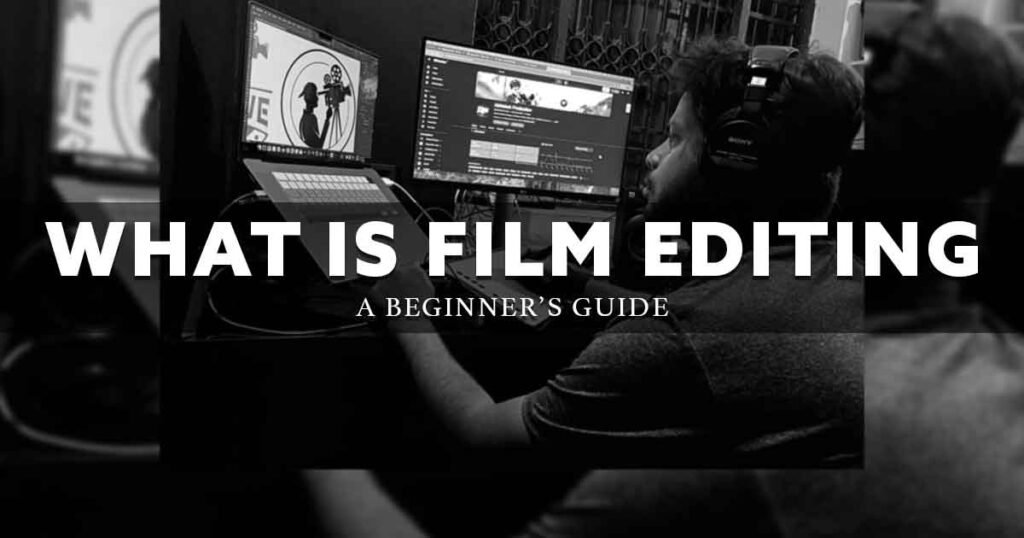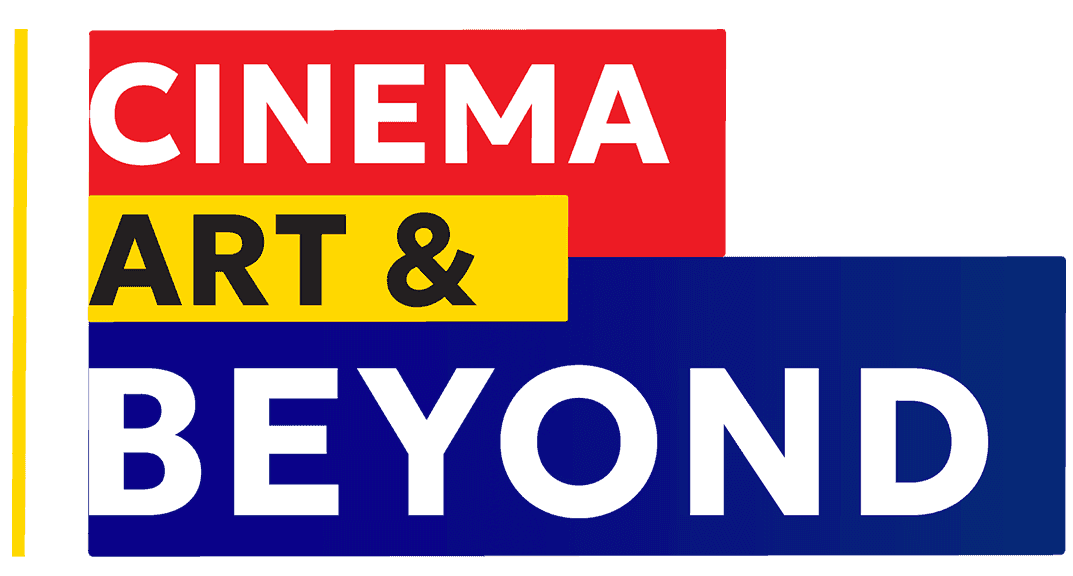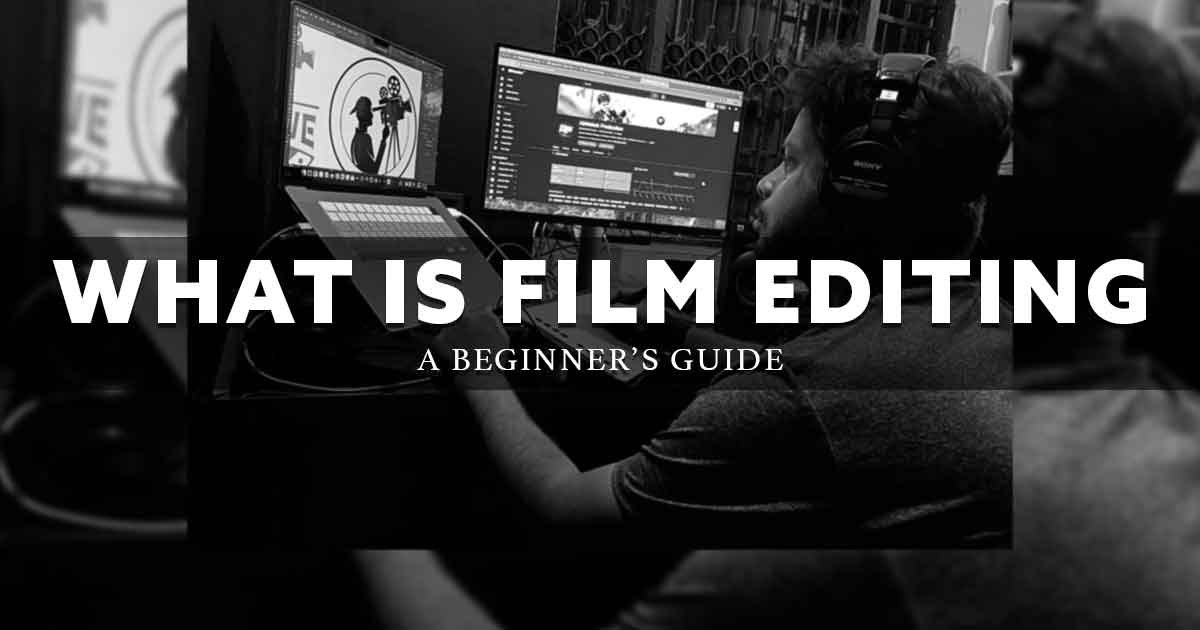Understand the basics of film editing in our beginner’s guide! Learn essential techniques, tools, and tips to craft compelling stories through the art of editing.
Film editing is one of the most crucial aspects of filmmaking, often referred to as the “invisible art” because, when done well, it seamlessly blends the different components of a film to create a cohesive, engaging story. It is the process of selecting, organizing, and assembling raw footage into a finished film, television show, or video production. At its core, editing is about storytelling — arranging the elements in a way that conveys the director’s vision, enhances the emotional impact, and guides the audience’s experience of the narrative.

In this essay, we will explore the concept of film editing in-depth, including its history, techniques, tools, roles, and impact on the final product. We will also examine how editing contributes to the rhythm, pacing, and meaning of a film, and its relationship to other key elements of filmmaking.
1. The Role of Film Editing in Filmmaking
Film editing is the process of piecing together raw footage (Shots) — also known as dailies or rushes — shot during production to create the final film. Editors work with a variety of footage, including the principal photography, special effects, and sound elements, to craft a compelling story. The role of an editor is not just to arrange shots, but to make decisions about which moments to include, which to omit, and how to combine them in a way that makes sense emotionally and narratively.
Editing serves several critical purposes in filmmaking:
- Narrative Structure: Editing is responsible for establishing the flow of the narrative. Editors decide when and how scenes will transition, which ultimately affects the pacing and timing of the story. They determine the logical progression of events, ensuring that the plot unfolds in a coherent manner.
- Emotional Impact: A skilled editor can evoke strong emotional responses from the audience through their choices of when to hold on to a shot, when to cut, and how to create tension or relief through pacing and rhythm. Editing allows filmmakers to manipulate emotional tone by controlling the pacing of the scenes.
- Continuity: Editing ensures that the film maintains visual and narrative continuity, ensuring that elements such as time, space, and character actions remain consistent. It addresses discrepancies between shots, such as changes in lighting, costume, or camera angles, making the film appear seamless.
- Artistic Expression: Beyond the technical aspects, editing is also an artistic endeavor. The way shots are juxtaposed, the timing of cuts, and the use of visual effects all contribute to the mood and thematic richness of the film. A good editor works to ensure that the director’s creative vision is realized on screen.
2. History of Film Editing
Film editing has evolved significantly over the past century. In the early days of cinema, films were edited by hand, with editors physically cutting and splicing film strips to create a sequence of images. This was a time-consuming and labor-intensive process, and early filmmakers were often restricted by the limitations of the medium.
Early Beginnings: The Silent Era
The roots of film editing can be traced back to the silent film era. Pioneers like Georges Méliès and D.W. Griffith were among the first to experiment with editing techniques, although these methods were rudimentary compared to modern standards. Griffith’s film The Birth of a Nation (1915) is often credited with establishing the basic principles of continuity editing, which involves maintaining a logical flow between shots.
During this period, editors learned to use simple techniques like “cross-cutting” (alternating between two scenes happening simultaneously) to create tension or parallel action. Another important development during this era was the concept of “montage,” popularized by Soviet filmmakers like Sergei Eisenstein. Montage refers to the idea that the collision of disparate shots can create meaning and emotion beyond the individual shots themselves. Eisenstein’s Battleship Potemkin (1925) is one of the seminal works that exemplified this technique.
The Hollywood Studio System: Classical Editing
The 1930s through the 1950s saw the development of the Hollywood studio system, during which film editing became more streamlined and formalized. The goal was to create films that were easily accessible to mass audiences, which meant adhering to a set of established editing conventions known as the “continuity system.”
The continuity system ensured that films were edited in a way that was invisible to the audience, creating a smooth and natural viewing experience. The “180-degree rule,” “shot/reverse shot,” and “match cuts” were among the techniques that became standard in this period. Editors worked in close collaboration with directors, cinematographers, and sound designers to maintain visual consistency and uphold the narrative clarity of the film.
The 1960s and Beyond: Experimentation and Innovation
As filmmakers began to experiment with new forms of storytelling in the 1960s and 1970s, film editing underwent a transformation. The rise of counterculture and the influence of avant-garde cinema encouraged editors to break free from traditional conventions. Films like Bonnie and Clyde (1967) and Easy Rider (1969) challenged the conventional use of pacing and timing, while 2001: A Space Odyssey (1968) featured innovative, non-linear editing that played with time and space in ways never before seen.
The rise of digital technology in the late 20th century further revolutionized editing. Digital editing software, such as Avid Media Composer and Final Cut Pro, made the process faster and more flexible, offering editors unprecedented control over the footage. Non-linear editing (NLE) systems allowed editors to access any part of the film at any time without the constraints of physical film, making the editing process more efficient and creative.
3. Techniques in Film Editing
Film editing involves a wide range of techniques, each of which can significantly influence how the audience perceives a story. Below are some of the key techniques employed in film editing:
Continuity Editing
Continuity editing is the most commonly used style of editing in narrative cinema. It aims to create a seamless flow between shots to preserve the illusion of continuous time and space. This technique ensures that actions and events appear to unfold logically and without interruption. Some of the most common continuity techniques include:
- The 180-Degree Rule: This rule ensures that the camera stays on one side of an imaginary axis between two characters, maintaining spatial consistency.
- Shot/Reverse Shot: This is often used in dialogue scenes to show the back-and-forth between two characters, cutting between close-ups of each character’s face.
- Match Cuts: These cuts link two shots together through a visual or thematic similarity, often used to transition between scenes or to symbolize a connection between different times, places, or events.
Montage Editing
Montage is a technique that involves juxtaposing seemingly unrelated shots to create meaning. This technique is particularly effective at conveying complex ideas or emotions quickly. The most famous example of montage editing is Sergei Eisenstein’s work in Battleship Potemkin, where rapid cuts between the soldiers, the ship, and the people on the stairs created a powerful sense of rising tension.
Another form of montage is the musical montage, popularized in Hollywood films, where a series of quick cuts shows the passage of time, often accompanied by music. An example would be the training sequences in films like Rocky (1976), where a rapid succession of shots conveys the protagonist’s progress and struggle.
Non-Linear Editing
Non-linear editing (NLE) is the process of assembling a film in a non-sequential manner. This technique allows filmmakers to explore more experimental or complex structures, such as flashbacks or parallel storylines. One of the most famous examples of non-linear editing is Quentin Tarantino’s Pulp Fiction (1994), which presents a series of interconnected stories in a non-chronological order.
Jump Cuts and Discontinuity
Jump cuts are abrupt transitions between shots that are typically used to convey disorientation, time lapse, or emphasize a break in continuity. While these are often seen as mistakes in traditional editing, they can also be used intentionally to create a sense of urgency, confusion, or irony.
4. The Tools of Film Editing
In the past, editors worked with physical film stock and specialized editing machines such as the Steenbeck and KEM flatbed editors. These machines allowed editors to view, cut, and splice film strips manually.
Today, most editing is done digitally using software. The most popular digital editing programs include:
- Avid Media Composer: A powerful, industry-standard software used by many professional editors, particularly in Hollywood. It allows for complex editing tasks, color grading, and audio mixing.
- Final Cut Pro: Apple’s editing software, which is favored by many independent filmmakers and video editors. It is known for its user-friendly interface and efficient workflow.
- Adobe Premiere Pro: A versatile editing tool that integrates well with other Adobe Creative Suite applications. It is widely used in both professional and amateur filmmaking.
In addition to these editing software, editors often use tools for color correction, sound mixing, and visual effects, which all contribute to the final look and feel of the film.
5. The Impact of Editing on Film
Film editing can profoundly shape the impact and reception of a film. A well-edited film is more than just a collection of shots; it is a carefully crafted experience that leads the audience through the story with precision and clarity.
- Pacing and Rhythm: The pace at which a film unfolds is determined by the editing. A fast-paced action film may feature rapid cuts to create excitement, while a slow, contemplative drama may have longer takes to allow for reflection and emotional depth.
- Narrative Clarity: Good editing clarifies the story, ensuring that viewers can follow the plot even if there are complex narrative structures, such as flashbacks, time shifts, or multiple perspectives.
- Emotional Engagement: The way a scene is edited can enhance or diminish the emotional impact. For instance, a carefully timed cut can enhance suspense or heighten the emotional resonance of a moment.
Conclusion
Film editing is an indispensable part of the filmmaking process that goes far beyond simply piecing together raw footage. It is a craft that blends technical proficiency, artistic vision, and storytelling intuition. From the silent film era to the digital age, editing has evolved, but its central role in shaping a film’s narrative, emotional impact, and aesthetic remains constant. Whether through continuity editing, montage, or non-linear storytelling, the editor is essential in bringing the director’s vision to life, crafting an experience that is both compelling and immersive for the audience.
Also Read : What Is Filmmaking | A Beginners Guide
Also Read : What is Cinematography | A Beginners Guide
Also Read : What is Film Scoring | Understand Correctly
Frequently Asked Questions ;
How do I start learning film editing?
Answer: Watch tutorials on platforms like YouTube or Skillshare, Practice editing raw footage, and Analyze edited movies to understand pacing and transitions.
What skills are required for film editing?
Answer– Storytelling: Understanding the narrative flow.
Attention to detail: Ensuring continuity and smooth transitions.
Technical knowledge: Using editing software and tools.
Creativity: Enhancing mood and tone.What tools are used for film editing?

